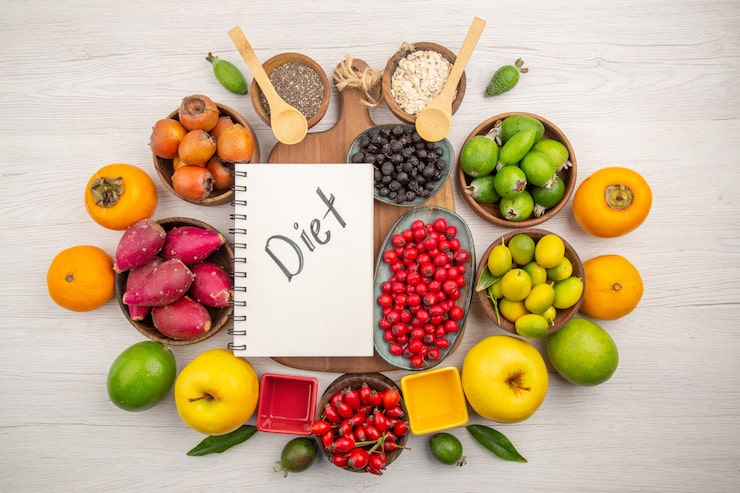Eating healthy during busy weeks can be tough, often leading to quick, unhealthy meals or missed ones. But good nutrition is key for energy, immunity, and focus when things are hectic. This guide provides easy ways to eat well without lots of meal prep, showing that nourishing yourself during busy times doesn’t have to be stressful.
Planning Ahead: Your Foundation for Success
The secret to eating well during busy weeks starts before the chaos begins. Meal planning and prep work like insurance for your nutrition—a small investment of time that pays dividends when you’re pressed for minutes.
Start by dedicating 30 minutes each weekend to plan your upcoming week. Look at your calendar and identify particularly busy days when you’ll need grab-and-go options. Choose recipes that share common ingredients to minimize shopping time and reduce food waste.
Create a detailed shopping list organized by store sections. This prevents multiple trips to the grocery store and ensures you have everything needed for the week ahead. Consider online grocery pickup or delivery services to save even more time.
Batch cooking is your best friend for busy weeks. Prepare large portions of versatile ingredients like roasted vegetables, cooked grains, and proteins that can be mixed and matched throughout the week. Spend two hours on Sunday preparing these components, and you’ll have the building blocks for multiple meals.
Quick & Easy Breakfast Ideas
Breakfast sets the tone for your entire day, yet it’s often the first meal to be sacrificed when time runs short. These nutritious options require minimal morning effort while providing sustained energy.
Overnight oats are a game-changer for busy mornings. Combine rolled oats with milk, yogurt, and your favorite toppings in a jar before bed. By morning, you have a creamy, satisfying breakfast ready to eat or take with you. Try combinations like banana and peanut butter, berries and almonds, or apple cinnamon.
Smoothies offer maximum nutrition in minimum time. Prep smoothie bags by portioning frozen fruits and vegetables into freezer bags. In the morning, simply add liquid and blend. Include protein sources like Greek yogurt, protein powder, or nut butter to keep you satisfied longer.
Yogurt parfaits can be assembled in minutes using Greek yogurt, fresh or frozen berries, and a sprinkle of granola or nuts. The protein from yogurt helps maintain stable blood sugar levels throughout the morning.
For grab-and-go options, prepare breakfast burritos in advance. Fill whole wheat tortillas with scrambled eggs, black beans, vegetables, and cheese. Wrap individually and freeze. Simply microwave one on busy mornings for a complete, portable meal.
Lunch on the Go
Midday meals often suffer during busy periods, leading to afternoon energy crashes and poor food choices. Portable lunch options ensure you maintain steady energy levels regardless of your schedule.
Mason jar salads stay fresh for days when layered correctly. Start with dressing at the bottom, add sturdy vegetables like carrots and bell peppers, include grains or proteins in the middle, and top with delicate greens. Shake and eat when ready.
Wraps and sandwiches offer endless variety and portability. Use whole grain tortillas or bread, add lean proteins, plenty of vegetables, and healthy fats like avocado. Cut in half and wrap in foil for easy eating.
Bento-style boxes allow you to create balanced meals with multiple small portions. Include a protein source, complex carbohydrates, fruits, vegetables, and a small portion of healthy fats. This approach ensures variety and helps prevent meal fatigue.
Leftover dinners make excellent next-day lunches. When cooking dinner, intentionally prepare extra portions to pack for lunch. This strategy eliminates additional meal preparation while ensuring you eat well-balanced meals.
Nutritious Snack Options
Strategic snacking prevents energy dips and reduces the likelihood of poor meal choices. Keep nutritious options readily available in your office, car, or bag.
Fresh fruits paired with protein create satisfying snacks. Apple slices with almond butter, berries with Greek yogurt, or banana with a handful of nuts provide both quick energy and sustained satisfaction.
Raw vegetables with hummus offer fiber, vitamins, and plant-based protein. Pre-cut vegetables like carrots, bell peppers, and cucumber at the beginning of the week for convenient snacking.
Trail mix combining nuts, seeds, and dried fruit provides portable energy. Make your own to control sodium and sugar content, or choose store-bought versions with minimal added ingredients.
Hard-boiled eggs prepared in advance offer high-quality protein in a convenient package. Pair with a piece of fruit or some whole grain crackers for a more substantial snack.
Efficient Dinner Strategies
Dinner preparation can feel overwhelming after a long day. These strategies help you create nutritious meals without spending hours in the kitchen.
One-pan meals minimize both preparation and cleanup time. Combine protein, vegetables, and healthy fats on a single baking sheet. Season well and roast until everything is cooked through. Examples include salmon with roasted vegetables, chicken thighs with sweet potatoes and Brussels sprouts, or tofu with mixed vegetables.
Slow cooker meals require minimal active cooking time. Add ingredients in the morning, and return home to a fully cooked meal. Soups, stews, and braised meats work particularly well with this method.
Stir-fries cook quickly and accommodate whatever vegetables you have available. Keep frozen vegetables and pre-cooked grains on hand for ultra-fast preparation. A simple sauce of soy sauce, garlic, and ginger transforms basic ingredients into a flavorful meal.
Pasta dishes can be both quick and nutritious. Choose whole-grain pasta, add plenty of vegetables, and include a protein source. Even a simple combination of pasta, frozen vegetables, canned beans, and olive oil creates a balanced meal.
The Role of Supplements
Even with careful planning, busy schedules can create nutritional gaps. Supplements may help fill these gaps, though they shouldn’t replace a varied diet.
A high-quality multivitamin provides insurance against missing key nutrients. Choose one that’s third-party tested and doesn’t exceed recommended daily values for fat-soluble vitamins.
Protein powder offers convenience when whole food protein sources aren’t available. Add to smoothies, oatmeal, or yogurt to increase protein content. This is particularly helpful for people following plant-based diets or those with increased protein needs.
Omega-3 supplements support brain health and reduce inflammation. If you don’t regularly eat fatty fish, consider a high-quality fish oil or algae-based supplement.
Before starting any supplement regimen, consult with healthcare professionals. Weight loss centers like those in Salt Lake City often provide guidance on appropriate supplementation based on individual needs and health goals.
Hydration is Key
Proper hydration supports every bodily function, yet water intake often decreases during busy periods. Dehydration contributes to fatigue, headaches, and reduced cognitive performance.
Carry a reusable water bottle and refill it throughout the day. Choose one with measurements to track your intake visually. Aim for pale yellow urine as an indicator of adequate hydration.
Set phone reminders to drink water regularly, especially if you tend to forget during busy periods. Apps can track your intake and send gentle nudges to drink more.
Flavor water naturally with cucumber, lemon, mint, or berries if plain water feels boring. Herbal teas also contribute to fluid intake while providing variety.
Monitor your hydration needs during particularly stressful or active periods, as both stress and physical activity increase fluid requirements.
Mindful Eating Practices
Busy schedules often lead to distracted eating, which can affect digestion and satisfaction. Even small mindful eating practices can improve your relationship with food.
Take three deep breaths before eating to signal your nervous system to prepare for digestion. This simple practice helps you transition from busy mode to eating mode.
Put away electronic devices during meals when possible. Focus on the colors, textures, and flavors of your food. This attention helps you recognize fullness cues and increases meal satisfaction.
Eat slowly, even when time is limited. Chewing thoroughly aids digestion and allows your body to register fullness appropriately. This prevents overeating and improves nutrient absorption.
Practice gratitude for your food, even during rushed meals. Acknowledging the nourishment you’re providing your body creates a positive mindset around eating.
Conclusion
Nourishing your body with a busy schedule requires planning, adaptability, and self-compassion. The strategies provided help maintain health during busy times, focusing on sustainable systems rather than perfection.



